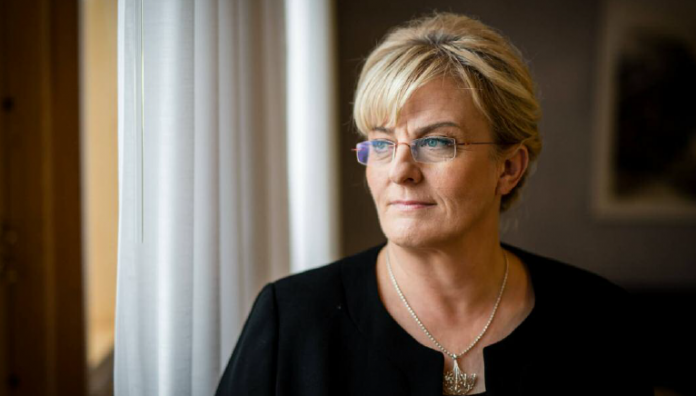Minister of Social Affairs and Health in Finland, Pirkko Mattila, reflects on the future priorities of the healthcare sector in Finland
Society is in a constant state of change. To keep up with the pace of development, we must prepare for the future by envisioning how our society may change and by planning accordingly.
Finland attaches great importance to tackling noncommunicable diseases (NCDs). Currently, NCDs are the major cause of premature deaths, suffering, disability and lost opportunities. Therefore, WHO Independent High-level Commission on NCDs published
“Time to deliver” in June 2018, a report which comes with six key recommendations. Compiling concise, bold and actionable recommendations was not easy but Finland is satisfied with the outcome. We focused on a strategic approach, which fits into different contexts from global to local level. I am particularly happy that the report emphasises the importance of tackling socioeconomic inequalities and transforming health systems towards more integration, health promotion and public health work.
Now it is time to move from commitments to action. The second phase of Commission work aims to engage in political advocacy for NCDs including promoting the implementation of the recommendations.Now it is time to move from commitments to action.The second phase of Commission work aims to engage in political advocacy for NCDs including promoting the implementation of the recommendations.
In Finland, we have traditionally worked across sectors to tackle health inequalities. The on-going health and social services and regional government reform will define elements of cross-sectoral work structures on the regional level. This will open up completely new
opportunities for health promotion, as the counties will be responsible for health and social services, employment and economic development services, and the planning and steering of the use of regions.
The current government has disseminated and implemented best practices, targeting them on population groups whose well-being and health are poorer than average. In the future, we need to adopt social marketing and service design approaches to reach vulnerable
groups effectively. Simultaneously, we need to develop everyday environments, so that they provide all with equal opportunities and vulnerable groups with additional support.
One important way to enhance citizens’ health in Finland is the National Immunization Program (NIP). It protects Finnish boys and girls against twelve different diseases. The NIP has developed through decades of extensive research on disease epidemiology, vaccine immunology, safety and effectiveness, as well as economic evaluation of different vaccination strategies in the Finnish healthcare system. As a major public health achievement, the Finnish NIP has dramatically reduced the burden and costs of vaccine-preventable diseases.
The NIPs evolve with new vaccines and new evidence-based vaccination strategies becoming available. We are currently considering extending HPV-vaccination from teenage girls to boys also, the introduction of shingles vaccination and pneumococcal vaccination in
elderly or medical risk groups as well as different strategies for protecting the population against pertussis. Finland is also one of the few countries in the EU that provides all healthy children with the annual seasonal influenza vaccine.
As the NIP continues to develop, the focus is also on the delivery side. Extensive efforts are being made across the healthcare system to ensure that the vaccination coverage remains high in all areas and population groups.
An essential factor in NCD work is the continuous training of healthcare professionals. In Finland, medical and dental education are publicly funded by the state and the counties. Both healthcare providers and universities, who give such education, are eligible for compensation. The novel thing in the reform is that every healthcare provider – whether public or private – who takes part in the publicly funded healthcare, has to educate
healthcare students and they receive monetary compensation for it. The county, which hosts a university hospital, would receive the funding and deliver it
in its area. However, as a prerequisite for funding, the counties need to have a training agreement with the universities responsible for medical and dental education. Another determinative factor is that the university considers that the education given meets its quality standards.
When thinking of the future, technology development cannot be bypassed. Finland defines its future research and innovation activity priorities in the National Health Growth Sector Strategy and Road Map. The objective of the strategy is that Finland is the source and user of versatile and high-quality scientific research, inventions and innovations. The roadmap includes activities like implementing the Act on the secondary use of social and health data, establishing new for example genome and cancer centres of excellence and enhancing the joint activities of the biobanks
Finland needs to make full use of the opportunities of the digitalisation, ICT, artificial intelligence (AI) and robotics in order to guarantee the well-being of citizens and funding for the service system. New technologies help professionals provide better service and care, help people live healthy lives independently and safely in their own home and help recover functional and working capacity quickly through rehabilitation. This is our way of building a healthy society and sustainable well-being.
Pirkko Mattila
Minister of Social Affairs and Health, Finland
Finnish Government
Tel: +358 295 16001
info@vnk.fi
http://valtioneuvosto.fi/en/sipila/minister-of-social-affairs-and-health
www.twitter.com/MattilaPirkko











